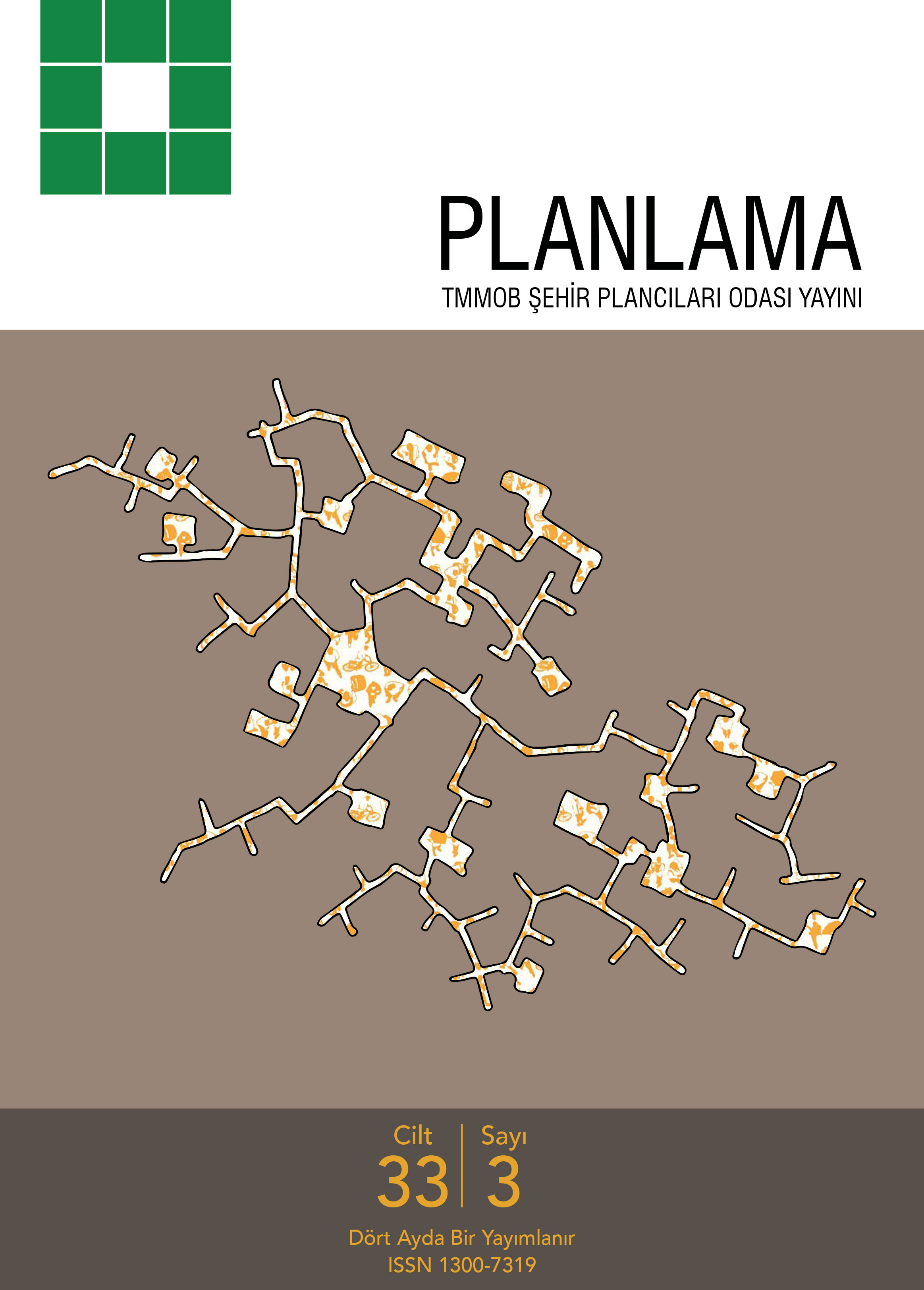Dini Yapıların Hatırlanabilirliği: Tanjant Yolu Örneği
Demet Yılmaz Yıldırım1, Şeyma Bayram21Karadeniz Teknik Üniversitesi, Mimarlık Fakültesi, Mimarlık Bölümü, Trabzon2Recep Tayyip Erdoğan Üniversitesi, Mühendislik Ve Mimarlık Fakültesi, Mimarlık Bölümü, Rize
Hatırlanabilirlik psikoloji, felsefe, mimarlık, planlama gibi farklı disiplinlerde farklı boyutlarda ele alınmıştır. Mimarlık ve planlama alanlarında hatırlanabilirlik mekânsal algılanabilirlik ve kollektif bellek, psikoloji alanında ise algılama süreci üzerinden ele alınmıştır. Çalışma farklı disiplinlerin hatırlanabilirliği ele alma biçimlerini sentezlemesi açısından özgündür. Hatırlanabilirliği hem süreci üzerinden hem de mekânsal algılanabilirlik üzerinden tartışmıştır. Ayrıca çalışma alanı olan Tanjant Yolu, Trabzon kentinin doğu ve batısını birbirine bağlayan kent merkezinin içinden geçen hem taşıt hem de yaya için yoğun kullanılan ana yatay akslarından biri olması açısından önemlidir. Çalışmanın amacı, Tanjant Yolu üzerinde yolla konumsal veya görsel ilişki kuran dini yapıların hatırlanabilirliklerini, imaj oluşum aşamalarından olan odaklanma ve iz bırakma süreçleriyle birlikte açıklamaktır. Bu amaç doğrultusunda odaklanma aşamasında yolun ve tespit edilen dini yapıların fiziksel analizleri, iz bırakma aşamasında kalıcılık analizi, hatırlanma aşamasında kullanıcıların bu dini yapıları ve yerlerini hatırlama durumuna ilişkin analizler yapılmıştır. Çalışmada, Tanjant yoluyla ilişkili imge oluşum süreçlerinden olan odaklanma, iz bırakma ve hatırlanma aşamaları sonucu öne çıkan dini yapılar tespit edilmiştir. Çalışma Tanjant yoluyla ilişkili hatırlanabilirliği güçlü dini yapıların ortaya konması ve bu dini yapıların bellekte bıraktığı izlerin korunması veya güçlendirilmesi için alınması gereken tasarım kararlarının neler olabileceği konusunda veriler sağlamaktadır. Dini yapıların hatırlanabilirliğinin, imaj oluşum süreci üzerinden ve algılanmanın en güçlü olduğu hareketle birlikte ele alınması, bu amaçla çalışma alanı olarak Trabzonun tarihi birçok dini yapı barındıran yatay bir aksının seçilmesi çalışmanın özgün yönünü oluşturmaktadır.
Anahtar Kelimeler: Odaklanma, hareketle algılama, iz bırakma, dini yapı, hatırlanabilirlik.The Rememberability of Religious Buildings: The Case of Tanjant Road
Demet Yılmaz Yıldırım1, Şeyma Bayram21Departmant of Architecture, Karadeniz Technical University Faculty of Architecture, Trabzon, Turkey2Departmant of Architecture, Recep Tayyip Erdoğan University Faculty of Engineer and Architecture, Rize, Turkey
Memorability has been handled in different disciplines such as psychology, philosophy, architecture, and planning. In architecture and planning, memorability has been approached through spatial perceptibility and collective memory, while in psychology, it has been addressed through the process of perception. The study is original in terms of synthesizing different disciplines' approaches to memorability. It has handled memorability both through the process and spatial perceptibility. Furthermore, the subject of study, Tanjant Road, is significant due to its role as one of the main horizontal axes that connects the eastern and western parts of the city of Trabzon, serving as a heavily used route for both vehicles and pedestrians within the city center. The aim of this study is to explain the rememberability of the religious buildings on Tanjant Road that establish a spatial or visual relationship with the road together with the processes of focus and persistence, two of the image formation stages. In line with the purpose of the study, physical analyses of the Tanjant Road and identified religious buildings along the road were conducted at the stage of focus, a rememberability analysis was conducted at the stage of persistence; and analyses about whether or not the users remembered these buildings and their locations were made at the stage of being remembered. The study identified the religious buildings related Tanjant Road that stand out at the stages of focus, persistence and being remembered, which are among the image formation processes. The study gives information about the design decisions that should be taken to reveal the religious buildings with strong rememberability, and to protect or strengthen the marks left by these religious buildings in memory. Discussing the remember process and the movement where perception is the strongest and for this purpose, the examination of a horizontal axis of Trabzon, which contains many historical and protected religious buildings, constitutes the originality of the study.
Keywords: Focus, perception with movement; persistence; religious building; rememberability.Sorumlu Yazar: Demet Yılmaz Yıldırım, Türkiye
Makale Dili: İngilizce












